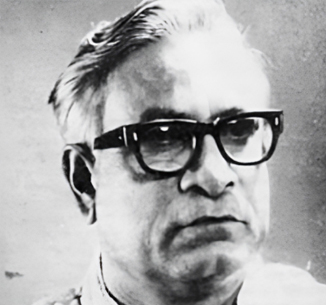Introduction:
Quamrul Hassan, a renowned artist, left an indelible mark on the world of art with his extraordinary talent and profound vision. Born in 1921 in Bardhaman, West Bengal, India, Hassan's paintings not only captivate the eye but also delve deep into the socio-political fabric of his homeland. His works reflect a seamless fusion of traditional and contemporary elements, allowing viewers to witness the essence of Bengal through his artistic lens.
A Journey through Colorful Canvases:
Hassan's paintings vividly portray the diverse facets of Bengal, ranging from idyllic rural landscapes to the harsh realities of a politically corrupt society. Through his masterful brushstrokes, he skillfully captures the vibrant colors and intricate details that bring his subjects to life.
In his depictions of rural Bengal, Hassan's love for his homeland shines through. His canvas becomes a portal, transporting viewers to lush green fields, serene rivers, and quaint villages. He skillfully utilizes basic colors, allowing each hue to breathe life into the scenes. The simplicity of his palette resonates with the essence of rural life, celebrating the rustic beauty of Bengal.
However, Hassan's artistic prowess extends beyond the serene. With a sharp political awareness, he fearlessly exposes the corruption and degradation that plagued his society. Through his powerful paintings, he sheds light on the socio-political issues that afflicted Bengal, serving as a catalyst for change and inspiring viewers to question the status quo.
The Unique Blend of Pata Painting Techniques and Folk Motifs:
One of Hassan's notable achievements is his ability to seamlessly merge traditional pata painting techniques with contemporary artistic expressions. Pata painting, a traditional art form of Bengal, involves intricate brushwork and the use of vibrant colors. Hassan's deep appreciation for this form of art led him to incorporate its essence into his own works.
Folk motifs, another integral aspect of Hassan's paintings, add a touch of cultural heritage to his creations. By intertwining folk elements with his modern artistic paradigm, he not only pays homage to Bengal's rich artistic legacy but also breathes new life into traditional motifs.
A Political Voice through Fierce Cartoons:
Hassan's artistic journey is not limited to canvas alone. His fierce political cartoons resonate with the masses, inspiring civil movements and demonstrations. During the Liberation War of 1971, his poignant cartoons became a source of motivation, fueling the spirit of freedom fighters and capturing the essence of the struggle for independence.
Two of Hassan's works have etched themselves into the annals of Bangladesh's political history. His portrayal of Yahya Khan, the Pakistani president responsible for the genocide in Bangladesh, stands as a powerful condemnation of oppression. Additionally, his satirical depiction of the then dictator of Bangladesh, Hossain Mohammad Ershad, shortly before his death, showcases his boldness in challenging authority.
Recognition and Legacy:
Quamrul Hassan's artistic brilliance was acknowledged through numerous accolades. He was awarded the President's Gold Medal in 1965, the Comilla Foundation Gold Medal in 1982, and the prestigious Independence Day Award in 1979, among others. His contributions also extend beyond the realm of art, as he played a pivotal role in establishing institutions such as the Government College of Arts and Crafts and the Bangladesh Small and Cottage Industries.
Today, Hassan's legacy lives on through his designs of national emblems, including the state monogram of Bangladesh, Bangladesh Parjatan Corporation, Bangladesh Bank, and Biman Bangladesh Airlines. These emblematic creations stand as a testament to his lasting impact on his homeland.
Quamrul Hassan's paintings transcend the boundaries of time and space, offering a glimpse into the soul of Bengal. With his mastery of color, fusion of traditional and contemporary elements, and powerful political voice, he emerges as an artist whose legacy goes beyond artistry. His works continue to inspire and challenge us, urging us to reflect on our society, embrace our heritage, and strive for a better future. Quamrul Hassan remains an icon, an artistic visionary, and an embodiment of the spirit of Bengal.

